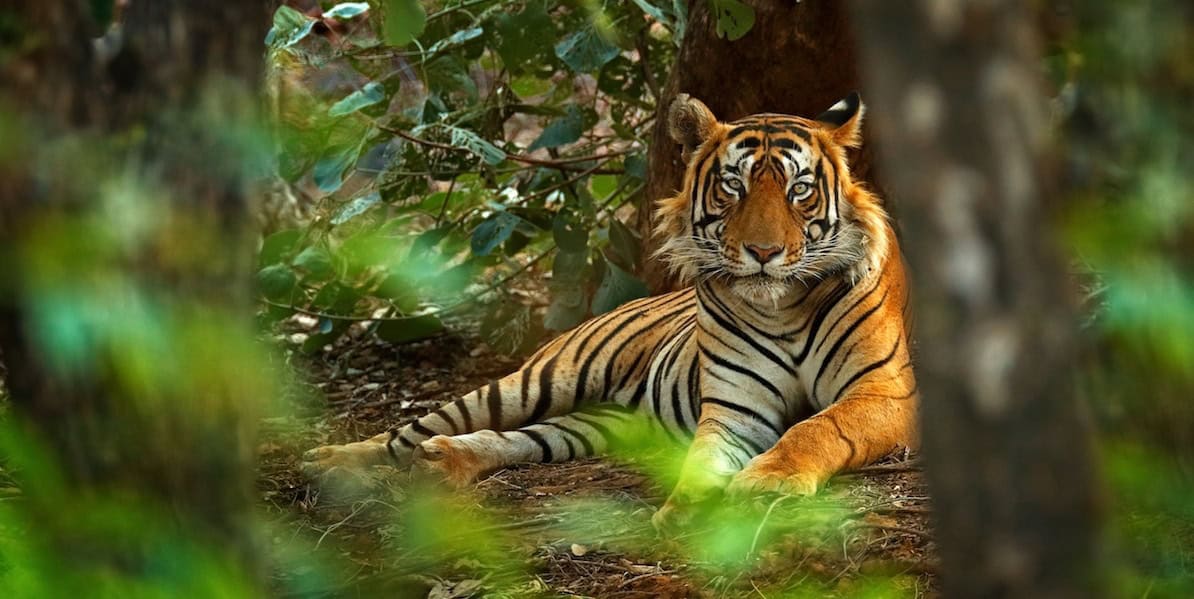An estimated 7.77 million animal species call Earth home – yet nearly 90% have never been identified, and many are at risk of extinction. Head off to spot this magnificent seven – while there’s still time…

Orangutan, Borneo
Both species of the ‘man of the forest’, Bornean and Sumatran, are Critically Endangered, their rainforest habitat ravaged by rampant deforestation, much of it a result of illegal logging or clearance for oil-palm plantations. For a chance of witnessing this beautiful red ape swinging through the forest canopy, head to the Danum Valley Conservation Area, Maliau Basin or Kinabatangan River in Sabah, the Malaysian state encompassing much of northern Borneo. For a virtually guaranteed encounter, head to one of the dedicated sanctuaries caring for orphaned and injured orangutans, at Sepilok (Sabah), Semenggoh and Matang (both Sarawak, Malaysian Borneo) or Ketapang (Kalimantan, Indonesian Borneo). Plan your visit to coincide with the morning feed, when bananas lure these mesmerising creatures to platforms; there’s also a feeding station in Gunung Leuser National Park, northern Sumatra.

Pangolin, South Africa
High on many a wildlife-watcher’s ticklist, pangolins are both extraordinary – the only truly scaly mammals – and at real risk of extinction. Of the eight extant species, the four found in Asia are all classed as either Endangered or Critically Endangered, while the four African species are Vulnerable. When threatened, these ant-eating mammals roll into a ball (the name pangolin comes from the Malay pengguling: ‘one who rolls up’), defended by those tough scales – but that’s no defence against poaching and illegal trade, much of fuelled by demand for ‘medicinal’ products in Asia, particularly China and Vietnam. Though sightings anywhere are extremely sparse, you might just be lucky enough to spot a ground pangolin in the Namiri Plains of Tanzania’s Serengeti region, at Okonjima in Namibia, the Masai Mara in Kenya near the Tanzanian border, or Madikwe Reserve or Tswalu Kalahari Reserve in South Africa.

Snow leopard, Ladakh, India
Perhaps 5,000 of these rare felines survive in the wild, hunting wild (and sometimes domesticated) sheep in the high Himalaya and Tien Shan Mountains. Though its range stretches across several countries in south, central and east Asia, possibly your best chance of spying the gorgeous grey rosetted pelage of the ‘ghost of the Himalaya’ is in the lofty valleys of Ladakh, in India’s far north-west. Pack your binoculars, zoom lens and plenty of warm clothing, head for Hemis National Park or the Ulley Chhu valley, find an expert guide – and pray to the gods of wildlife that you’re very, very lucky.

Maned wolf, Brazil
One of the oddest carnivores on Earth, this lanky-limbed beast looks like a big-eared fox with a Kalahari lion’s mane – on stilts. Roaming the cerrado (tropical savannna) of central Brazil, it’s believed to have developed a unique three-way symbiotic relationship with lobeira fruit and ants. Caraça Natural Reserve is a good place to find these curious creatures, but even if you don’t spot a wolf – and they’re very shy – out on the cerrado you may see giant anteater, tapir, giant armadillo or even, if you’re incredibly fortunate, jaguar.

Green turtle, Costa Rica
Lumbering and ponderous on land, sea turtles undergo a Cinderella transformation in the ocean, revealing their true beauty as smooth, strong swimmers. Nonetheless, the seven species of sea turtle have suffered declines over recent centuries, hunted for food (meat and eggs) and shells, and hit by pollution, nesting habitat loss and fishing bycatch. Today, though the green turtle’s range spans the globe, it’s classified as Endangered. Among the many nesting beaches, arguably the best place to see these amazing reptiles nesting or hatching is Tortuguero National Park in Costa Rica, site of a long-running conservation and research project.

Tiger, Nepal
The biggest of big cats once prowled vast swathes of India, Nepal, China, South-East Asia, even Siberia. Today, its populations are fragmented and sparse, with possibly fewer than 3,000 individuals surviving worldwide. India’s tiger reserves provide varied possibilities for tracking Shere Khan; Ranthambore may offer the best odds, though Kanha, Corbett, Pench, Tadoba and Bandavgarh are good alternatives, while Satpura is the place for walking safaris. However, Nepal’s two top national parks, Chitwan and Bardia, both host tigers as well as elephant, one-horned rhino, crocodiles, deer and monkeys.

Mountain gorilla, Uganda or Rwanda
Who can forget David Attenborough’s playful tussles with (or, rather, from) baby gorillas in Life on Earth? An encounter with our close primate relatives in the wild is a precious one, not least because the eastern gorilla is Critically Endangered, hit by poaching and habitat loss. Two prime places to meet these beautiful big apes are Uganda’s Bwindi Impenetrable National Park and Rwanda’s Volcanoes National Park. In both, you’ll need to book permits for a specific day’s gorilla tracking; it’s not cheap – $600 in Uganda, $1500 in Rwanda – but an hour with this gentle giant is priceless. Be prepared for lengthy, tiring, muddy, steep hikes to reach a habituated family. For a longer experience, in Uganda it’s possible to join a habituation programme spending four hours with a family ($1500).










